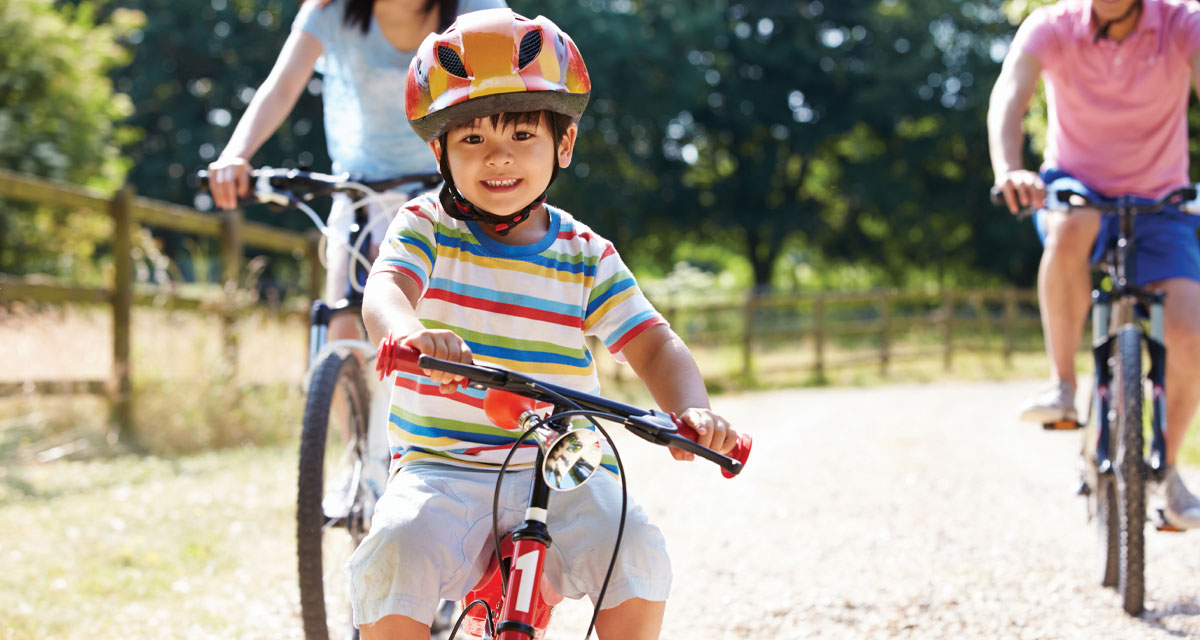Each month, this series will provide important facts and tips surrounding child safety in an effort to support parents and caregivers as they navigate reducing risks and creating the safest environment possible for the children in their lives.
Physical Fitness and Activity Are At The Foundation of a Lifelong Relationship with Healthy Habits
Back in 1983, the President’s Council on Fitness, Sports and Nutrition declared May, “National Physical Fitness and Sports Month” in an advocacy effort to encourage Americans to adopt healthy lifestyles. According to the White House’s proclamation in 2021, “American children are facing socioeconomic disparities, lack of opportunities for safe play and limited access to programs for increased activity with these being just a few of the inequities that many Americans face – inequities that have been further exacerbated by the pandemic.”
Parents play a pivotal role in the relationship their children have with physical fitness and activity. After all, creating a strong foundation by establishing healthy lifestyles early in childhood helps increase their chances of becoming healthy adults.
Knowing The Health Benefits From Physical Activity
Regardless of age or ability, staying physically active has a multitude of health benefits that only increase the more consistent we are with including activity in our daily lives. Physical activity is key to your child’s well being and overall health, giving them the opportunity to reduce the risk of chronic illness, reduce stress, improve focus, ease anxiety and depression, and improve self esteem. Youth and teen sports participation is proven to help develop key relationship building and leadership skills as well as increase time management and organization abilities.
Increasing Activity Starts at Home
Children often absorb their parents’ habits when it comes to active vs. sedentary lifestyles, so make a decision to help lead by example and include physical activity as a family habit. Encouraging you to do things together can help establish healthy habits and make it simply “part of life.”
Kids and teenagers ages six to 17 need at least 60 minutes of moderate-intensity aerobic activity every day. This can include things that get their heart rate up like taking the family dog for a walk, bicycle riding, playing tag with friends or swimming. Muscle-strengthening and bone-strengthening activities are important to include as well, especially during their fundamental years of growth and puberty. Sprinkling in a few days of more vigorous activity like hiking, running or team sports is important, too!
Children younger than age six tend to be more active movers naturally, but a good goal is to include around three hours of activity per day for your little ones. This doesn’t have to be anything overly planned, but keeping screen time to a minimum and encouraging active games, outdoor play, dancing, tumbling and other things that get them moving about.
Finding Activities You and Your Children Enjoy
It’s all about finding what works for you! As a caregiver to a child who may not enjoy physical activity often or have much interest in sports, it can be challenging, but figuring out what your unique child enjoys can be a fun way to try new things and find new interests. Start thinking about the things your child enjoys outside of just the physical things – games, creativity, being outdoors? When you focus on “fun” rather than the importance of daily activity or health benefits, your child will enjoy their time more and build a better relationship with physical activity. So, think about games you can play with your kids to get them moving, consider coaching a youth sport with them on the team, dancing in the kitchen every night as dinner is cooking or letting them try an activity you grew up enjoying. If your child is uninterested in something you try or didn’t enjoy it, that’s ok! Try something else, and brainstorm ideas together.
Get Started Today – Their Future Health Depends On It
Whether you are already actively encouraging your kids to be more active each week or are just starting to find ways to help increase activity, you’re doing great! Remember that it doesn’t have to be all or nothing. Whatever time you can prioritize for your children’s health and wellness is always a win! This can evolve over time, and you can increase their daily activity a little here and there over time and get creative about when you can do things as a family.
Helpful Resources to Learn More
- Action for Healthy Kids – actionforhealthykids.org























